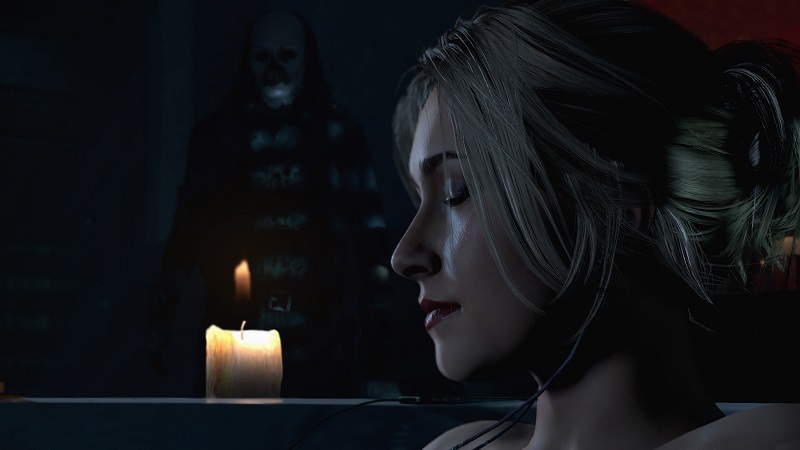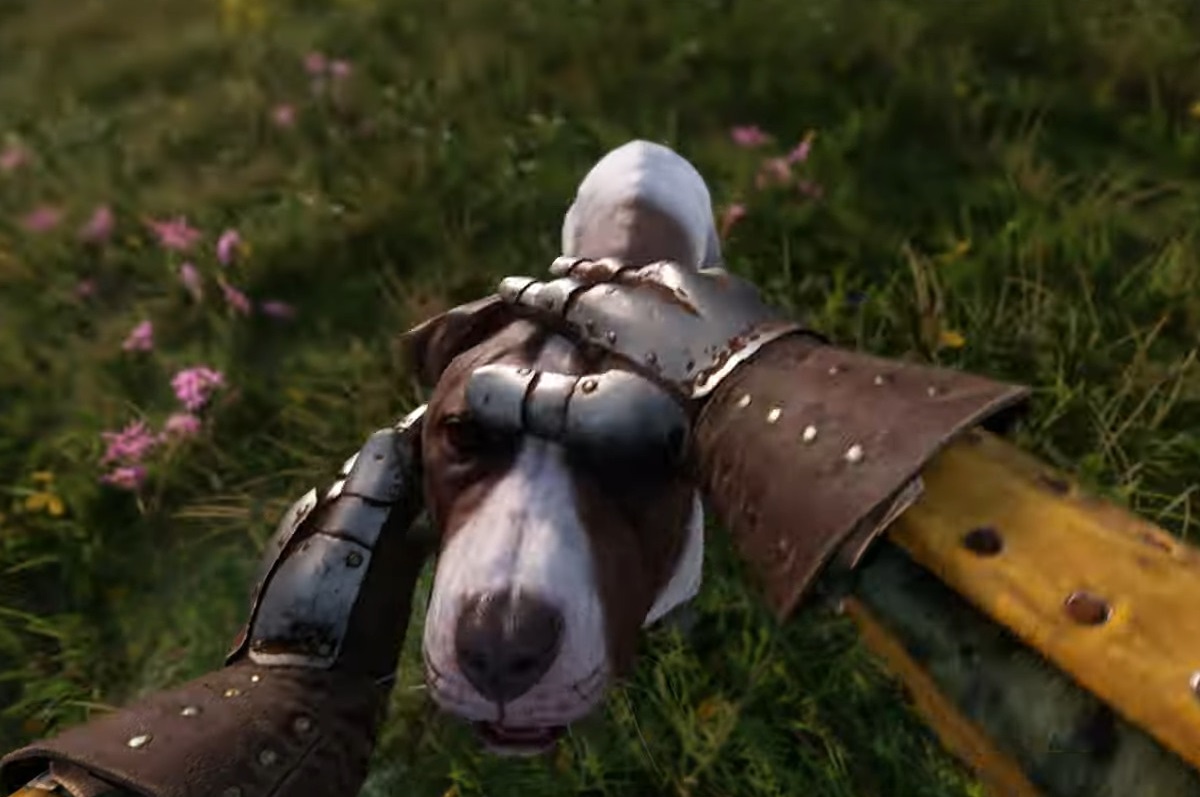Until Dawn is a horror game available from retail stores and for download from the PlayStation Store exclusively for the PS4. Until Dawn was originally announced at Gamescom 2012 as a PS3 exclusive which was to support the PlayStation Move motion controller in a first-person perspective; despite a 2013 release window the game remained unreleased and was feared to have been cancelled until developer Supermassive Games clarified that it was still actively in development which was proved true at Gamescom 2014 when Until Dawn was re-revealed as a PS4 exclusive. Developer Supermassive Games are clearly creative as they never seem to stick to a specific genre or perspective as they have developed a range of Little Big Planet downloadable content such as level kits and mini-games on PS3 and Vita, PlayStation Move titles including Tumble, Start the Party, Start the Party: Save the World and the Wonderbook game Walking with Dinosaurs on PS3 as well as porting and enhancing Guerrilla Games’ PS2 masterpiece Killzone to PS3 in the form of Killzone HD as part of the Killzone trilogy collection and Doctor Who: The Eternity Clock on PS3 and Vita, but have Supermassive Games created their most ambitious game to date with Until Dawn?
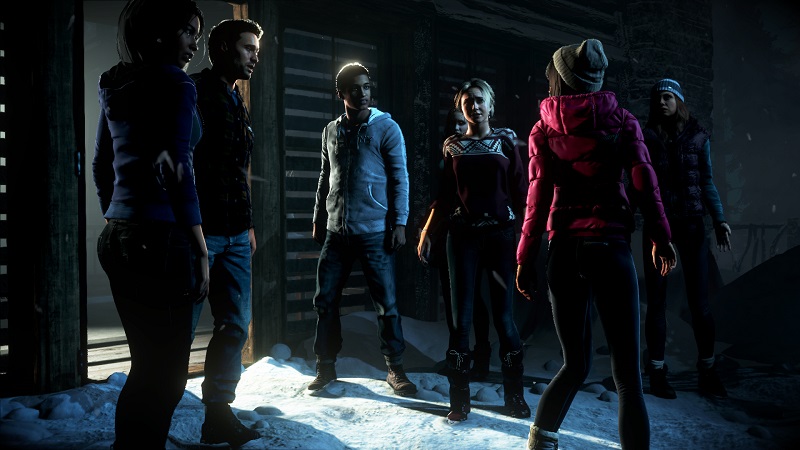
The story revolves around a group of friends who are brought together by the brother of two sisters who disappeared under mysterious circumstances a year earlier in order to return to the very same log cabin situated in Blackwood Pines in their honour in a celebration of their life, but also to find closure for their loss, so they can continue their lives as a group of friends, although not everything goes according to plan with arguments occurring between some of the group, while something far more sinister lurks in the shadows which ultimately begs the question; who will survive until dawn?

Until Dawn features hundreds of variations to the story throughout the game which are capable of having a massive affect on the ending based upon the decisions the player makes with every scene for a character resulting in a cliff-hanger before switching to another character to continue that character’s story and eventually cycling back around to carry on from the cliff-hanger which if anything is a superb design choice as it makes the player care more for each character when they are in such vulnerable and emotional states.
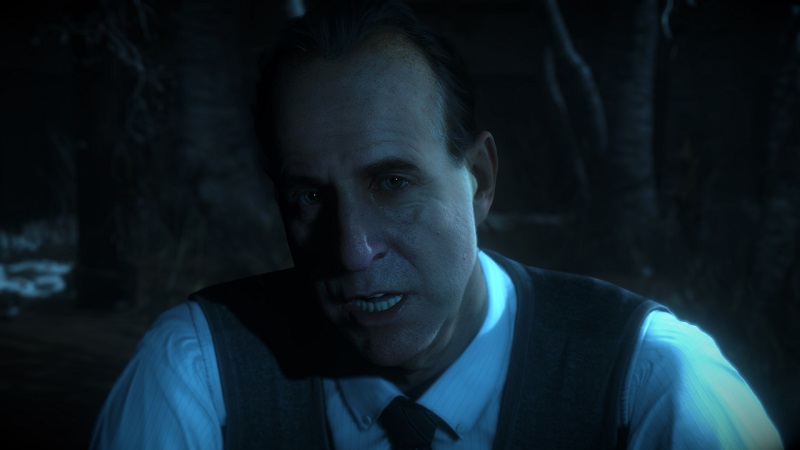
The game is presented in an episodic manner with each chapter punctuated by Dr. Hill testing your reactions, likes, dislikes and general thoughts with a series of psychological questions in between chapters which provide some momentary respite from the tension built up throughout chapters, although even then the consultations with Dr. Hill become increasingly tenser as the story progresses before reminding the player exactly what happened previously during a brief recap prior to the story continuing. The interesting element of the meetings with Dr. Hill is questions relating to fears which the player possesses such as if the player fears snakes or spiders with such dialogue actually influencing part of the game; if the player chooses spiders the following chapter will see a scene in which the camera angle pans back to a CCTV camera with a rather large spider walking across the screen, therefore provoking a fearful reaction from players who have a fear of spiders.

There is an extensive status and collectibles area which is accessible from the menu at any given moment with the status referring to character traits which revolve around such qualities as honesty, charitable, funny, bravery, romantic and curiosity, while the relationship status monitors the reduced or improved strength of a relationship between your current character and the 7 friends depending upon dialogue and decisions between characters. The Butterfly Effect provides analysis of decisions the player has made and the reactions by surrounding characters or the consequences they have escalated to throughout the 22 butterflies and their multiple facets.
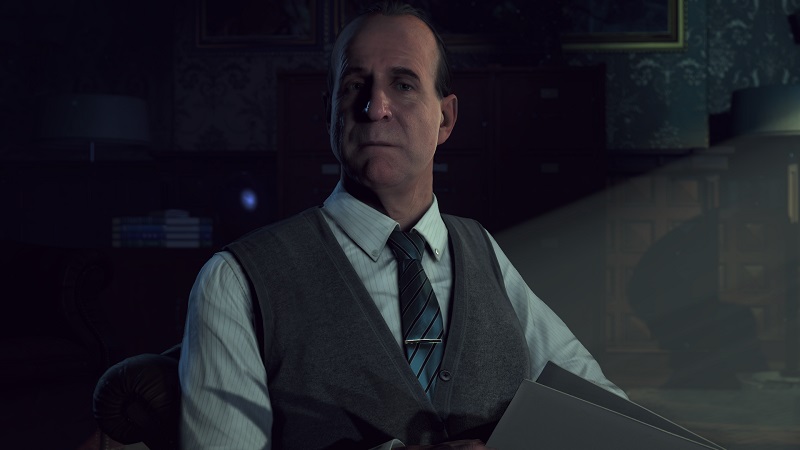
Collectibles are situated throughout the game comprising of a total of 77 clues to provide a back-story to exactly what happened at Blackwood Pines such as photos, letters, maps, newspapers, posters, objects and much more besides which all consists of their own descriptions with full transcriptions for written materials, although clues are not the only collectibles as there are 5 types of totem to collect including death, guidance, loss, danger and fortune with 6 totems to collect per type totalling to 30 totems scattered throughout the environments. Indigenous tribes created the totems as they believed butterflies would bring dreams and premonitions resulting in each type of totem having a purpose to provide a vision warning or guiding the player, while each totem will provide a clearer vision of the events of the past at Blackwood Pines and its enclosed buildings.
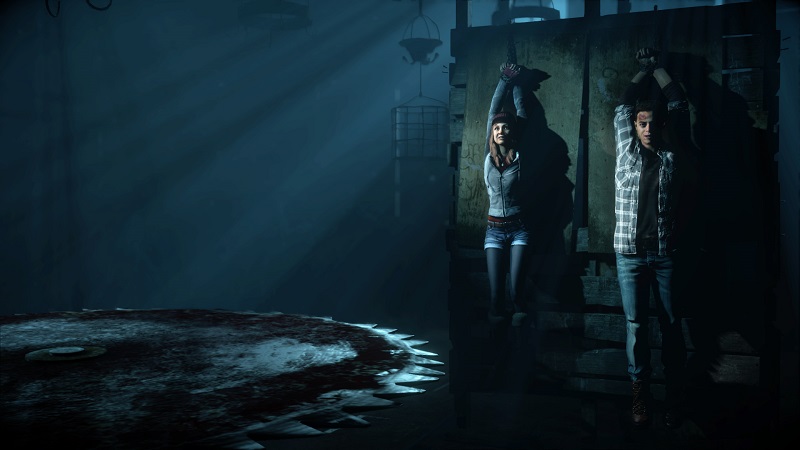
A variety of bonus content is gradually unlocked as rewards for the player progressing through the story which is an excellent design choice as it provides an in-depth look behind the scenes of the game with such excellent film quality featurettes as Meet the Cast which includes all of the actors and actresses explaining their character role within the game and their thoughts on the game, while Making a Scene sees the production design director discussing inspirations for the look and feel of the game and the implementation of horror elements, alongside The Science of Fear which showcases how the developers utilised biometric data to measure the unique responses from players such as their heart rates and cameras for their physical reactions to particular scenes in order to judge whether a scary scene was as scary as intended as well as many more videos totalling to 9 bonus content featurettes.
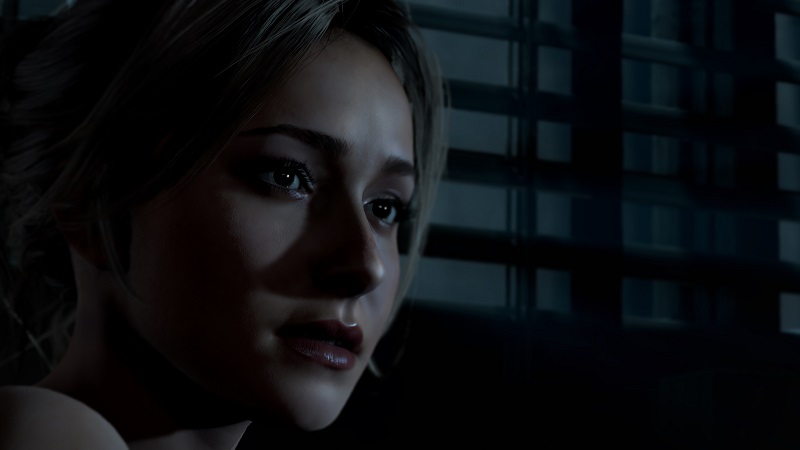
The character design is astonishingly detailed in every possible way as the player gets to play as each character in various scenes throughout the story, while character interaction is important as it can affect how the story plays out by changing key scenes. Every character is unique not only in their styling from hair to clothes, but also in their personalities as proven by the numerous character traits and relationship statuses which vary and change as the story progresses based upon decisions made by the player.
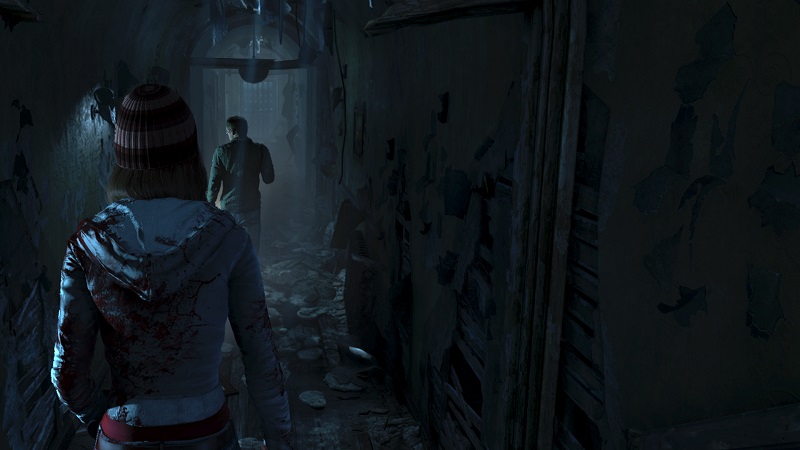
The environment design is exceptional as it provides a real sense of tension and atmosphere which lends itself rather well to the horror elements of the story and gameplay as the story takes place during winter with plenty of snowfall set amongst the scary backdrop of woods for miles around during exterior scenes, while the interior scenes are set in a dark cabin lit by only a fireplace and candles as the cabin is large in scale, but individual corridors and specific rooms are claustrophobic which creates a character from the cabin and the surrounding woods as they both have precisely the appropriate atmospheric tone to preside over such scary scenes.
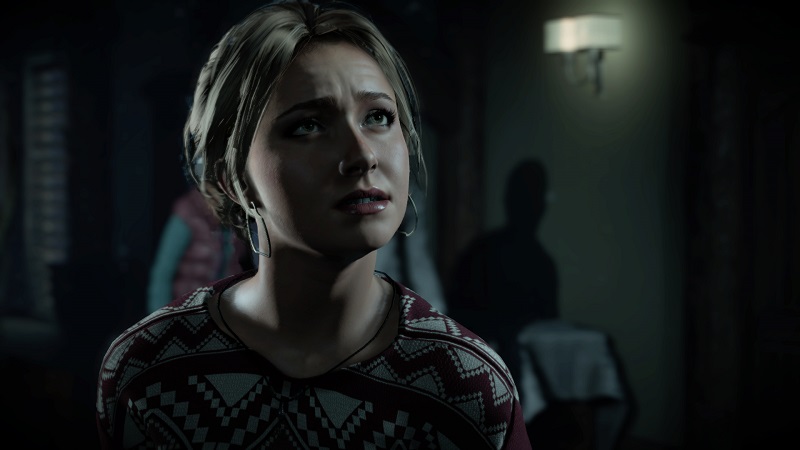
As Until Dawn is a horror game with teenage protagonists; it is only expected that it would take some inspiration for characters, environments and scares from such teen horror films as the Scream series, I Know What You Did Last Summer, The Grudge and a play on the premise of Final Destination with the totems providing a glimpse of what may happen in the future, although it also takes inspiration from more adult films such as Psycho and The Shining.
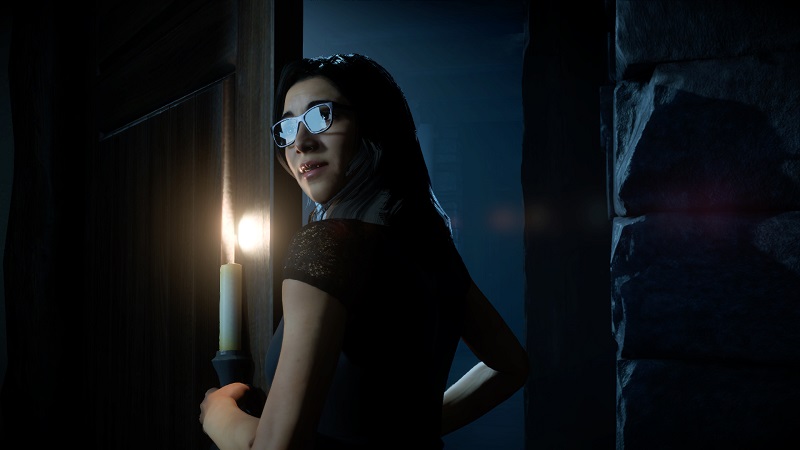
Until Dawn makes appropriate use of the PlayStation Camera as the camera captures feature can be enabled to take video of the player’s reactions to certain scary scenes of which there are many throughout the game which will be stored on the hard-drive and are accessible via the Cheap Shots menu which can be shared with friends online via the PS4’s share functionality.
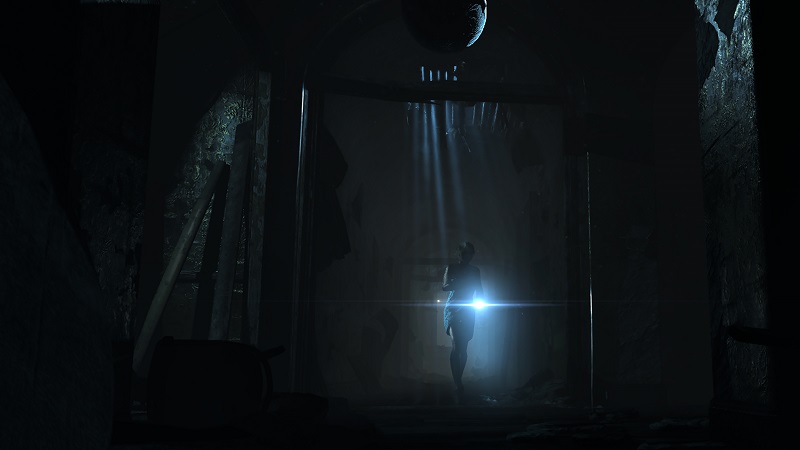
The performance during remote play is excellent with graphics, audio and general performance all at the same level of quality as the PS4 version which impressively delivers the same quantity of tension in the horror despite being on a 5 inch screen, while the control scheme has been appropriately optimised resulting in a suitable control scheme during remote play as picking up or interacting with an object has moved from R2 to R as has throwing or shooting in the given context, while swiping the touch pad to turn pages of books and striking matches has been mapped to the touch screen and R1 to display the status and collectibles menu has been mapped to right on the d-pad, although there is no gyroscopic motion sensing functionality during tense moments or as an optional alternative to the right analogue stick.
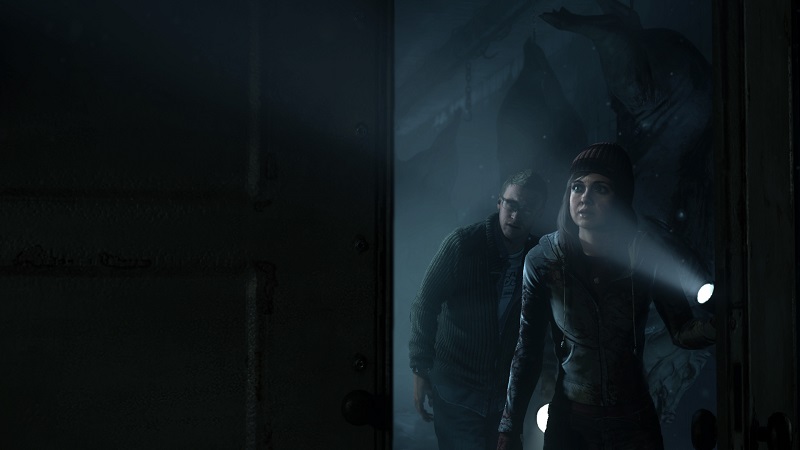
The controls are well mapped to the DualShock 4 controller with the control scheme consisting of pressing X to interact or choose; pressing O to navigate backwards; pressing R2 to pick up, interact, throw or shoot; holding L1 to walk faster; pressing R1 to display the status and collectibles menu; changing the direction of the left analogue stick to move the character; changing the direction of the right analogue stick to select an option, pan the camera, move the light source or rotate an object; pressing the share button takes you to the share feature menu; and pressing the options button to display the pause menu. There are some quick time events (QTEs) during scenes in which players will have a specific window of time to press a button followed by another 2 or 3 buttons as the characters find themselves in physical danger such as having to make a large jump across a gap or to ascend ledges, although the quick time events are extremely well implemented and are utilised to increase tension which is rather appropriate given the subject matter.
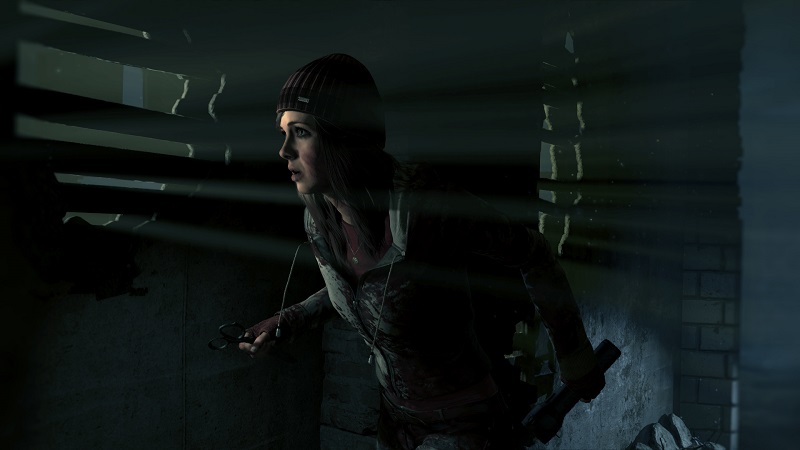
Swiping across the touch pad turns the pages of books and strikes a match, while the DualShock 4 controller vibrates during a heavy landing or a loud bang, alongside gyroscopic motion sensing functionality being utilised in tense moments when the controller has to be held perfectly still for a certain duration as an action is being performed as a heart beat pounds loudly, although it can also be used as an alternative to the right analogue stick to move the flashlight or lantern being held by the character, rotate a variety of objects such as books and moving the character’s face in the direction the controller is tilted. There is no light bar implementation which is surprising as it could have produced a unique colour for each of the characters, a corresponding colour for each of the totem prophecies as well as a colour for when a quick time event has been performed successfully or unsuccessfully.

Graphically, Until Dawn looks rather different from the original version which was planned for release on PS3 as it has been re-tooled with an upgraded Killzone: Shadow Fall graphics engine that offers stunning visuals, while the switch from first to third-person provides exceptional lifelike character models rendered with fluid facial and body animations with separate motion capture sessions for the facial expressions and body movements for each performance by the associated actor or actress to appropriately convey the dynamic story paths which share the same quality of detail in cutscenes and gameplay with surrounding environments that are just as excellent consisting of atmospheric lighting and shadows which add to the tension.
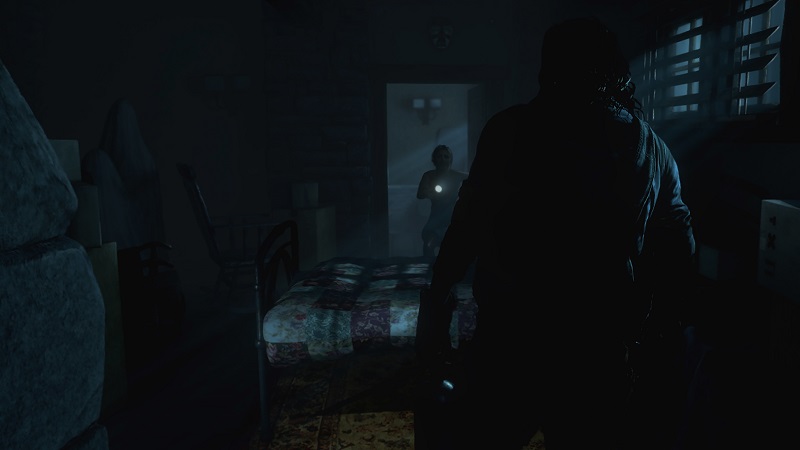
The presentation of the game is solid with a great user interface across various menus such as the main menu, status and collectibles menus, bonus content menu, settings menus and gameplay menus with support for navigation via the left analogue stick, directional pad and face buttons, although it does not include support for navigation via the touch pad. The background of the menu screens consists of the lead character’s face from that specific scene which reflects their current physical state such as having dirt on their face, while their face can be moved to look around their surroundings as the character performs different mannerisms and facial expressions as controlled by the right analogue stick or gyroscopic motion sensing functionality.
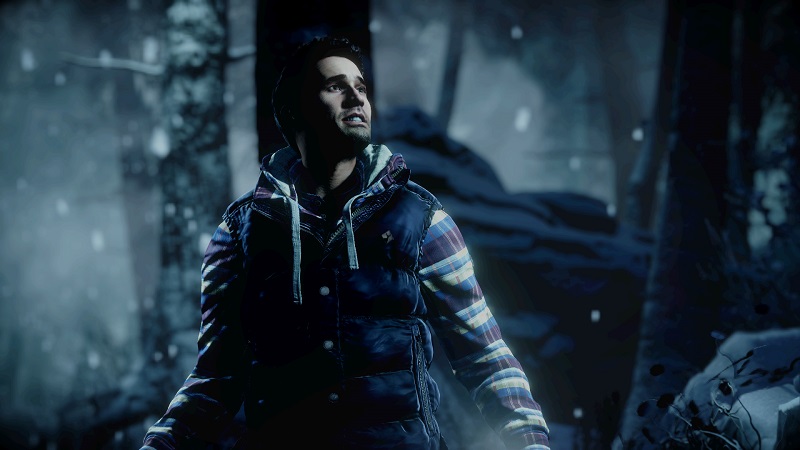
The highlight of the audio has to be the stunning emotion provoking performances which will make players laugh in the light relief moments and shriek in horror in the more tense moments from the entire cast who bring a great presence to each of their characters including Hayden Panettiere as Samantha bringing another excellent performance having starred in Heroes, Nashville and Scream 4 and having voiced Tati in The Mark of Kri, Kairi in Kingdom Hearts I, II, II: Final Mix +, Birth by Sleep and HD 1.5 Remix and Xion in Kingdom Hearts: Birth by Sleep and 3D: Dream Drop Distance, while Brett Dalton delivers an amazing standout performance in his impressive videogame debut as Michael with all the grace and presence of Nolan North’s Nathan Drake having starred in Marvel’s Agents of S.H.I.E.L.D. Rami Malek stars as Joshua who is being fun and calm around his friends but having to keep it together after what happened to his sisters in what is a difficult yet perfectly executed role having starred in the Night at the Museum films, 24, The Pacific, Battleship, Oldboy, Need for Speed and Mr. Robot with previous videogame experience in the form of Tahno in The Legend of Korra, alongside Peter Stormare as the chilling Dr. Hill having starred in The Lost World: Jurassic Park, The Big Lebowski, Mercury Rising and Armageddon opposite Bruce Willis, Minority Report opposite Tom Cruise, The Last Stand opposite Arnold Schwarzenegger and a variety of videogame roles such as Mattias Nilsson in Mercenaries 1 and 2, Pvt. Johann Strauss in Quake 4, Jorunn the Skald King in Elder Scrolls Online, Arach Jalaal and Dead Drop Orbit in Destiny and much more besides, while the talent of the entire cast really shines through as does the talent of the writers and director in the script and subject matter the cast are working with.
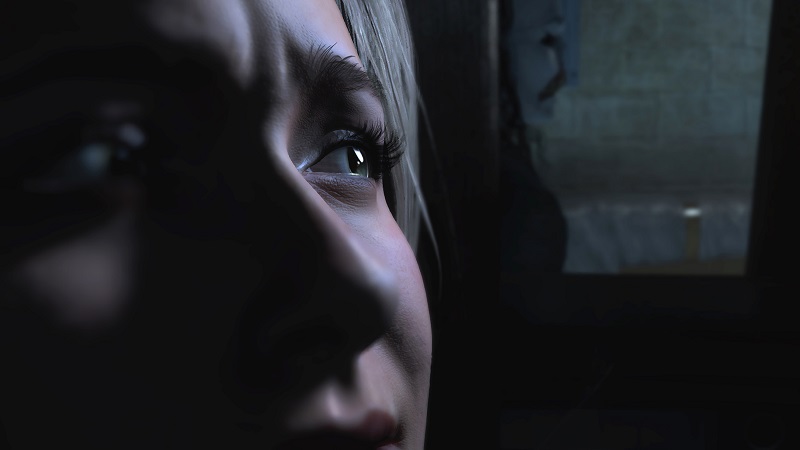
The sound effects do their job in audibly depicting the surrounding environments including the crumpling of snow when walked upon, creaking floorboards, interacting with objects, sudden noises, howling winds and more besides, although no horror film would be complete without an atmospheric, tension filled, nerve shredding soundtrack and Until Dawn is no different with a perfectly fitting soundtrack comprising of a theme song called O Death by Amy Van Roekel with production and arrangement by Jeff Grace, while there is also an entire score composed by Jason Graves who has won and been nominated for dozens of awards including the Square Enix Music: Outstanding Contribution by Composer in 2011 and the NAVGTR: Original Dramatic Score for the Tomb Raider reboot having previously composed music for various Star Trek games, the Dead Space series, The Wheelman, the Tomb Raider reboot, Evolve, The Order 1886 and much more besides. The DualShock 4 speaker implementation produces a sound effect during quick time events of a ticking clock to enforce the fact that there is a very limited period of time to make a decision, while there is also a relatively quiet sound effect when an object has been interacted with, a choice has become available or a status update has been added to the status menu, although it would have been better for the speaker to be producing a wider range of sound effects, atmospheric music or dialogue.
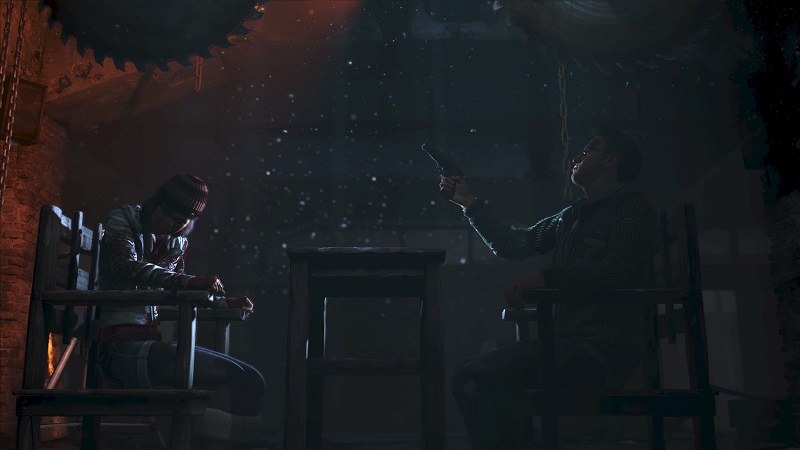
The trophy list includes 19 trophies with 4 bronze trophies, 5 silver trophies, 9 gold trophies and 1 platinum trophy. All of the trophies other than the platinum trophy are secret trophies which are earned for naturally progressing through the game by achieving a particular scenario with the relevant decisions; therefore the trophies contain spoilers of story related elements. It is estimated that depending upon skill and a good trophy guide to provide some helpful tips that it would take between 10 to 20 hours to platinum the trophy list.

There are no difficulty levels, although the difficulty curve is mostly up to the player in a lot of the scenes which involve physical sequences as they will usually offer the choice of choosing the safe route or the quicker route with the quicker route adding quick time events to prevent the character from tripping over an object or not making a jump, while the difficulty curve outside of physical sequences depends upon how quickly the player adapts to certain puzzles which are mostly exploration to find an object to progress such as a deodorant spray to combine with a lighter to melt the frozen lock on the front door of the cabin, although global stats can provide assistance in aiding your decisions and approach to progression between certain character relationships.

There are no online leaderboards as such, but there are global stats which can be activated for display during gameplay from the settings menu which effectively provides statistical analysis of the percentage of players who have chosen to select a specific approach in dialogue, reactions or even if it is best to take the safe route or quicker route. Global stats is a rather interesting feature which may influence your decisions when displayed and certainly makes you question your own decision if the percentages for both decisions are pretty much even, although online leaderboards would have provided even more replay value as they could have included fastest times set by each player for completing each chapter and the overall game.

There is a lack of multiplayer, although it would have really taken the game to the next level by having been drop-in/drop-out local and online co-operative multiplayer in which a second player could have helped to progress the story, especially during areas of gameplay which comprise of two characters such as Michael and Jessica in the woods headed to the external cabin, Samantha and Joshua headed to the basement to turn the hot water on or Christopher and Ashley investigating the disappearance of two of their friends a year earlier, while local and online competitive multiplayer could have consisted of a second player being the enemy hunting the group of friends as the other player plays as a character from the eight friends staying at the cabin who attempts to make the appropriate calculated decisions to find a safe area and stay there or keep on moving in the hope that he or she will not be moving towards the location of the enemy in an attempt to survive until dawn.
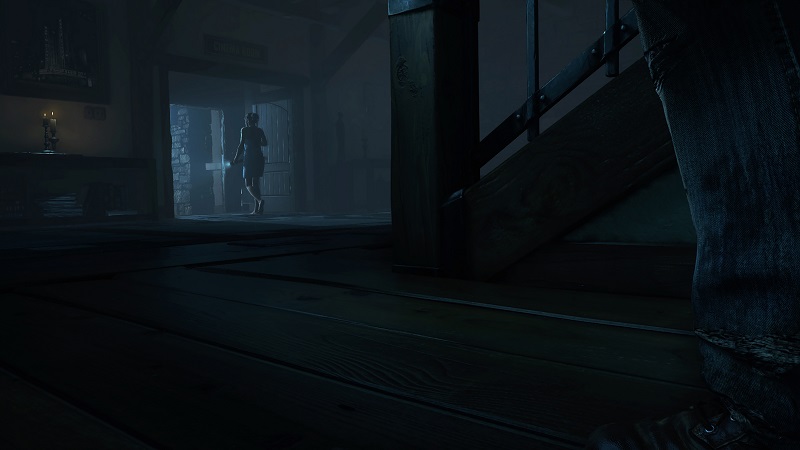
The replayability stems from a variety of areas including decisions affecting which characters remain in the game and providing numerous alternative endings, while the unlockable collectibles and unlockable bonus content introduce multiple elements of reward, alongside ever changing status updates altering the dynamics of the story even further.
Analysis
– Title: Until Dawn
– Developer: Supermassive Games
– Publisher: Sony Computer Entertainment Europe (SCEE)
– System: PS4
– Format: Blu-Ray Disc/PSN Download
– Cross-Buy: No
– Cross-Play: No
– Players: 1 (Global Stats Online Functionality)
– Hard Drive Space Required: 37.60GB (Version 1.02)
